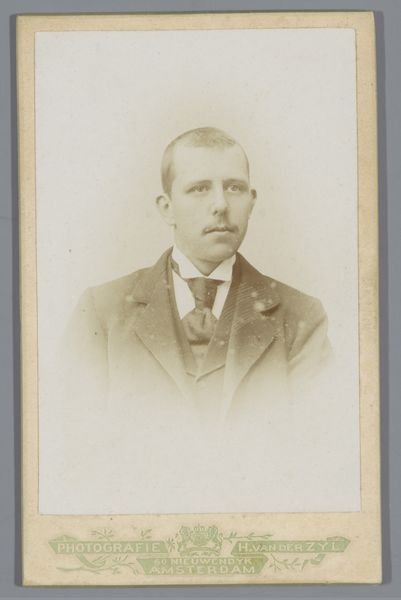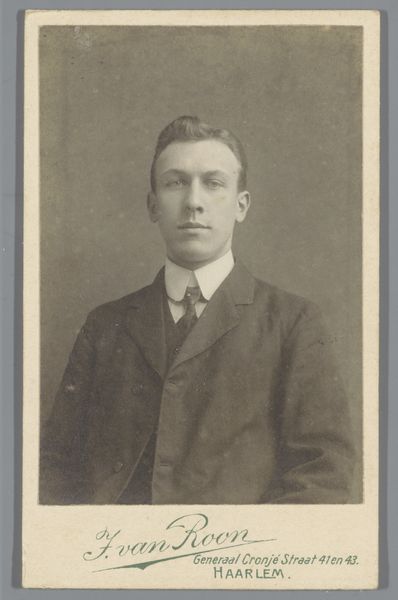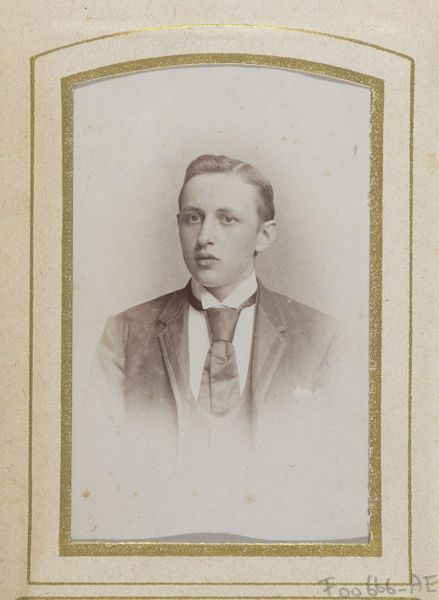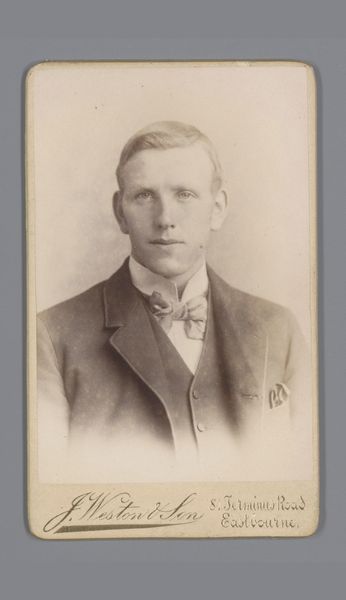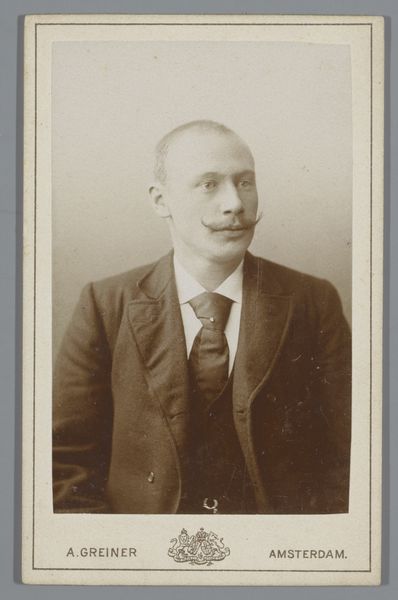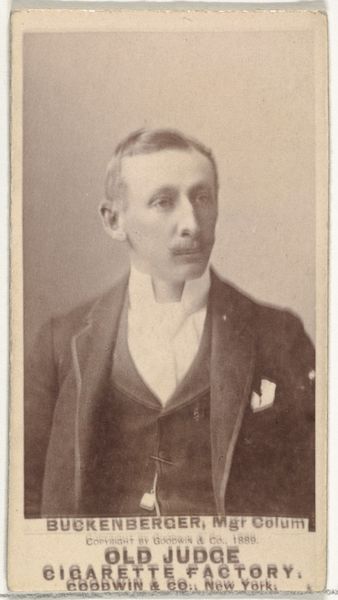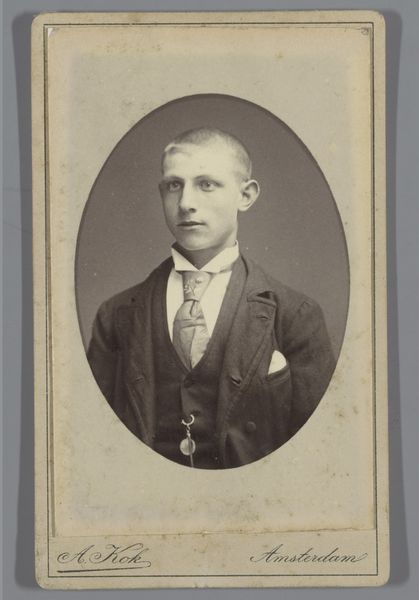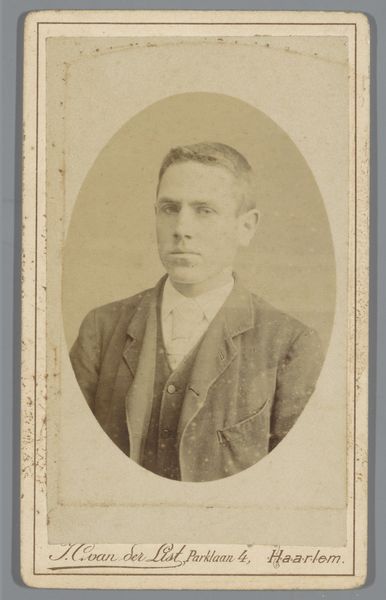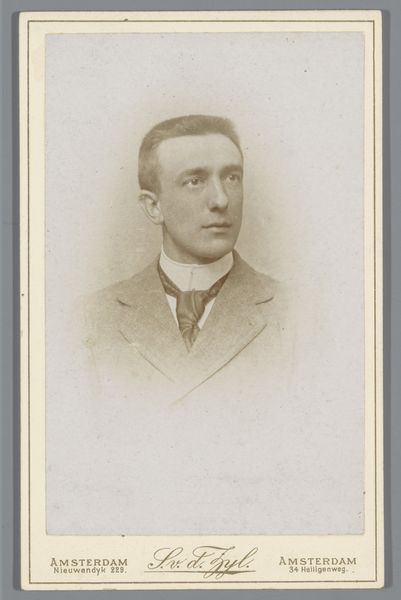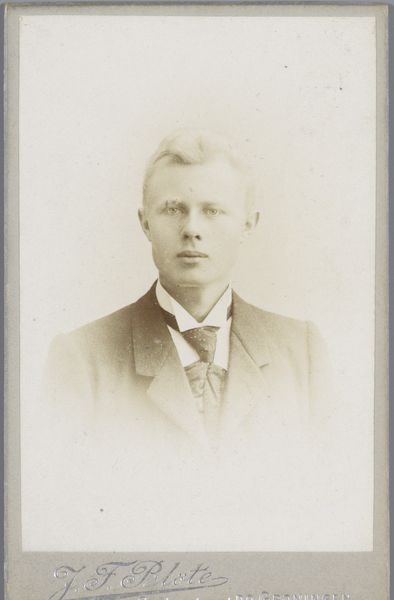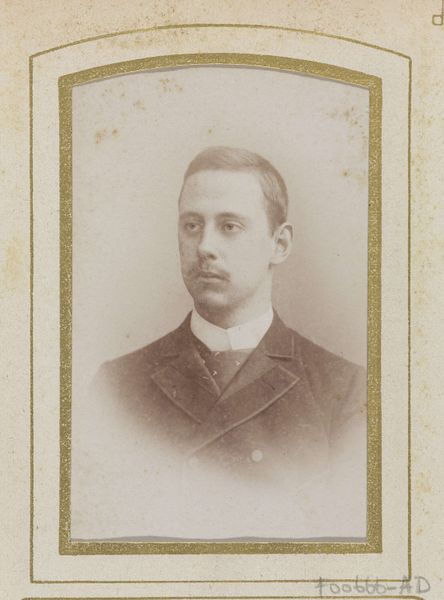
photography
#
portrait
#
photography
#
realism
Dimensions: height 165 mm, width 106 mm
Copyright: Rijks Museum: Open Domain
Editor: This is an intriguing portrait, "Portrait of an Unknown Man," dating from around 1865 to 1896. It’s a photograph by Albert Dekema. I'm struck by how formal he looks, and the starkness of the image given its age. What stands out to you? Curator: What fascinates me is the accessibility of photography at this time. A portrait wasn't just for the elite anymore. Dekema’s studio made these images affordable for a burgeoning middle class. Think about the materials: the specific photographic paper, the chemical processes...These dictated the image’s tones and longevity, making it almost mass-producible. How do these factors impact our understanding? Editor: That's a good point. The materiality really democratized image-making. So it is more than just portraiture then? It's about how photographs became another tool to display social standing. Does his clothing play into that? Curator: Precisely. Consider the labor involved in producing and maintaining his suit and tie. Who were the workers who manufactured these items? And who were his audience and peers for this performative portrait of professional dress? This "everyday" object carries a history of material and manufacturing, with traces of colonialism present. It all speaks to class, labor and aspiration. Editor: I never thought about the photo's context on that level, like examining the labor conditions surrounding its making. It gives it new depth. Thank you! Curator: Indeed. Seeing art through the lens of production and social context is essential to understanding its complete story. We might look at even the labor it takes for someone like us to present an artwork here in a gallery.
Comments
No comments
Be the first to comment and join the conversation on the ultimate creative platform.
